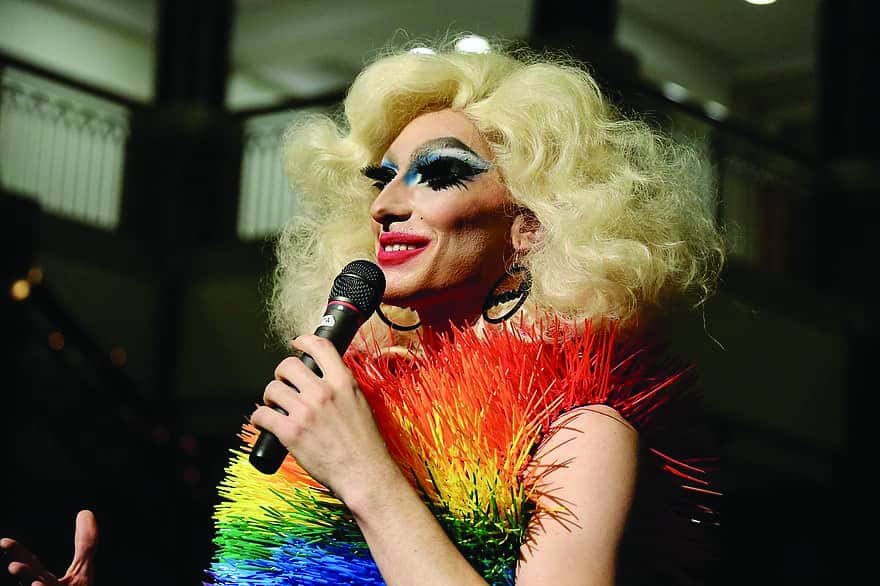Canada’s Drag Race judge faces backlash after performance critique

Was a judge’s comment body shaming, or valid performance critique?
For years, Ru Paul’s Drag Race has been a beacon of hope around the world for those in the queer community. It showcases gender fluidity, performance art, reality TV, queer history lessons, soap-level drama, and some of the most impressive make-up and costume artistry I have ever seen. Granted, I have also seen some of the worst make-up and costume artistry on the show, but they can’t all be winners, right?
In the past, the American version of Ru Paul’s Drag Race in the United States has allowed participation from international queens. Bebe Zahara Benet from Cameroon, Ongina from the Philippines, Kim Chi from South Korea, and Vivacious from Jamaica all became quick fan favourites in their respective seasons. The personal favourite for many avid watchers here in the north (myself included) was Brooke Lynn Hytes, a Canadian who placed second in season 11 to Yvie Oddly, and placed in the top three more often than any other contestant. Hytes was in the top three for nine separate weeks in her season – her consistency was astounding.
Among the dozens of historic events that have transpired this year (my sincerest condolences to the generations who will have to study 2020 in their history course), Canada’s Drag Race aired its first season over the past few months on Crave. Rather than having one judge making the decision on who stays or sashays away, the Canadian spin-off employed three main judges with varying areas of expertise.
The first of these judges is Brooke Lynn Hytes herself, making her the first contestant to become a full-time judge in franchise history. Hytes is a professional ballet dancer and an internationally-known drag queen who conducts herself with grace and poise that rivals Mama Ru’s. Given that she’d gone through the experience of the competition herself, she could sympathize most with the ups and downs Canada’s queens experienced through the season.
Stacey McKenzie – a model and runway modelling coach who has also judged on Canada’s Next Top Model – Is the second of the three. Her advice throughout the season proved invaluable to the queens when it came to presentation and confidence in the delivery of their performances. McKenzie wouldn’t beat around the bush when she was truly disappointed in someone’s runway performance, but she was speaking from years of personal experience, and the queens who took her tips quickly rose to the top.
The final judge for the Canadian show is Jeffrey Bowyer-Chapman, a biracial gay man from Alberta with experience in both modelling and acting. His expertise was often called on for the acting challenges where he would coach the queens on everything from their expression to their essence. In the “Meet Your Judges” video by Digital Spy GB, he said with a smile that “Our intention is to be of service to these queens and allow them to shine so we can show the world what we got up here in Canada.” Unfortunately, “what we got up here in Canada” at the moment is a whirlwind of cyberbullying and harassment.
There was moderate pushback from the queens regarding the judges’ critiques from day one, and it was one particular judge’s critique that seems to have been the catalyst for this current whirlwind. As someone who’s watched all of Ru Paul’s Drag Race, I’m rarely surprised when the judges give harsh critiques, since it’s their job to tell the competing queens what they can do to improve. I really respect Lemon for saying in an interview with NOW Magazine that “The judges are asked to critique us and are asked to better us. Part of their job is to break down every little thing about every girl. At the end of the day, I signed up to get critiqued.”
The critique that sparked controversy came from Bowyer-Chapman who, when critiquing Ilona Verley’s assless chaps in episode 6, said “I think that your mug is painted so gorgeously. When I see that (bum) and a little turnaround, a little full coverage foundation may have helped you out.” This comment was intended to mean that foundation on Verley’s exposed bum would have brought their look together better.
Hordes of audience members perceived that comment as Bowyer-Chapman body shaming Verley, and quickly jumped to social media on the offense. Hytes attempted to mediate later that night by saying “This was not meant as body-shaming whatsoever. From where we were sitting on the judges’ panel we could see red bumps and stuff that comes from shaving that we all get … that’s where that critique was coming from.” Sadly this comment didn’t satisfy; scores of the show’s fans continued to harass and verbally abuse Bowyer-Chapman, and he wound up deleting his twitter to distance himself from the abuse.
What I’d like to explain here is that there’s a difference between critiquing someone’s body and critiquing their performance and presentation. I saw this critique similarly to when Bowyer-Chapman told Jimbo in episode 4 that if she wants to paint her face and chest white for a visual effect, she needs to paint all her exposed skin, or it ruins the illusion she’s trying to create. Verley had the rest of their being decked out to the nines, so having no make-up on an area they were emphasizing took the audience out of the drag-illusion. It was a critique of Verley’s performance and presentation, not their body.
Here’s really what it boils down to: these queens entered a drag competition with the goal to win, and the judges’ critiques are meant to help them do that. The queens are there to give their best effort and the judges help them see what they could improve on because they have lived experiences these queens don’t have, and perspectives these queens may not be able to see from yet.








